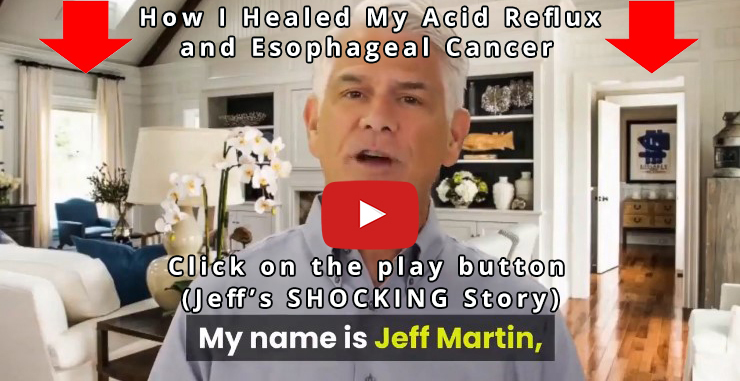Can Coffee Cause Heartburn? Acid Reflux Coffee Guide
I still remember the day it hit me—sipping my second cup of coffee during a busy morning, I felt a burning sensation creeping up my chest. At first, I brushed it off as stress. But as it became a recurring issue, I began to wonder: Was my beloved morning ritual causing me more harm than good? For someone who looked forward to the rich aroma and comforting warmth of coffee each day, the idea of giving it up felt like losing an old friend.
If you’ve experienced heartburn after drinking coffee and are asking yourself, “Can coffee cause heartburn?”, you’re not alone. In this guide, we’ll dive into why coffee might be triggering your acid reflux, how to enjoy it without the burn, and the types of coffee that are gentler on your stomach.
What Is Heartburn, and Why Does It Happen?
Heartburn, often described as a burning sensation in the chest or throat, occurs when stomach acid flows back into the esophagus. This condition, known as acid reflux, can be triggered by several factors, including diet, lifestyle, and anatomical issues.
The culprit? The lower esophageal sphincter (LES), a ring of muscle that acts as a gate between your esophagus and stomach. When it doesn’t close properly, acid can escape, causing discomfort.
Personal Experience:
For me, heartburn wasn’t just an annoyance—it was a distraction. It made me rethink my eating and drinking habits. After tracking my triggers, I noticed that coffee was often a common denominator.
Can Coffee Really Cause Heartburn?
The answer is yes—but it’s not the same for everyone. Coffee can contribute to heartburn in several ways:
1. Coffee’s Acidity
Coffee is naturally acidic, which can irritate the stomach lining and trigger acid reflux.
2. Relaxation of the LES
Compounds in coffee, including caffeine, can relax the LES, making it easier for stomach acid to escape.
3. Increased Stomach Acid Production
Caffeine stimulates the production of stomach acid, which can exacerbate reflux symptoms.
Personal Insight:
On days when I drank multiple cups of coffee, my symptoms were noticeably worse. Switching to a single cup or opting for less acidic varieties made a significant difference.
Factors That Determine Coffee’s Impact on Heartburn
Not all coffee is created equal, and several factors influence whether your cup of joe will trigger heartburn.
1. Roast Level
- Dark Roast: Surprisingly, dark roast coffee may be gentler on your stomach because it contains fewer compounds that stimulate stomach acid.
- Light Roast: Higher acidity makes it more likely to cause discomfort.
2. Brewing Method
- Espresso: The quick brewing process results in a more concentrated but less acidic cup.
- Cold Brew: This method produces a smoother, less acidic coffee that’s often gentler on sensitive stomachs.
3. Additives and Preparation
Cream, sugar, and flavored syrups can increase the likelihood of heartburn.
Personal Experience:
Switching to cold brew was a game-changer for me. Its mellow flavor was easier on my stomach, and I didn’t have to give up the joy of coffee entirely.
How to Enjoy Coffee Without Heartburn
You don’t have to quit coffee entirely to avoid heartburn. Here are some strategies to minimize its effects:
1. Opt for Low-Acidity Coffee
Low-acidity coffee varieties are designed for people with sensitive stomachs. Look for options labeled as “low acid” or try coffee made from beans grown in regions like Brazil or Sumatra, which naturally have lower acidity.
Personal Insight:
I started exploring low-acid coffee brands and found one that didn’t compromise on flavor. It allowed me to keep my morning ritual without the discomfort.
2. Limit Your Intake
Stick to one cup a day or reduce the size of your serving. Sometimes less is more when it comes to coffee and heartburn.
Why It Works:
Reducing caffeine intake lowers the likelihood of triggering acid reflux.
Personal Experience:
Downsizing my morning cup was tough at first, but my stomach—and my sleep—thanked me for it.
3. Drink Coffee After a Meal
Consuming coffee on an empty stomach can make heartburn worse. Pairing it with food helps buffer its effects.
Why It Works:
Food absorbs some of the acid and reduces its impact on your stomach lining.
Personal Insight:
I started enjoying my coffee with breakfast, and the difference was night and day. The burning sensation disappeared, and I still got my caffeine fix.
4. Experiment with Non-Dairy Creamers
Dairy can sometimes exacerbate acid reflux. Switching to plant-based creamers or drinking coffee black may help.
Why It Works:
Non-dairy options are less likely to irritate your stomach.
Personal Experience:
Almond milk became my go-to creamer. It added a subtle nuttiness and eliminated the heaviness I sometimes felt with dairy.
5. Try Decaf Coffee
Decaffeinated coffee contains significantly less caffeine, which means it’s less likely to trigger reflux symptoms.
Why It Works:
Lower caffeine levels reduce LES relaxation and stomach acid production.
Personal Insight:
I was hesitant about decaf but found a robust blend that tasted just like the real thing.
6. Choose Cold Brew
Cold brew coffee is made by steeping coffee grounds in cold water for an extended period. This process reduces acidity and bitterness.
Why It Works:
The smoother flavor and lower acidity are easier on the stomach.
Personal Insight:
Cold brew became my summer staple. I loved how refreshing it was, and it didn’t leave me with that post-coffee burn.
7. Add Alkalizing Ingredients
Consider adding a pinch of baking soda or drinking alkaline water alongside your coffee to neutralize its acidity.
Why It Works:
Alkalizing ingredients help balance the pH of coffee, making it less harsh on your stomach.
Personal Insight:
While skeptical at first, adding a pinch of baking soda worked surprisingly well. I barely noticed the difference in taste.
Best Coffee Beans for Your Gut
If you’re prone to heartburn, choosing the right coffee beans can make all the difference. Low-acid coffee beans, such as those sourced from Brazil, Sumatra, and Mexico, are known for their smoother, less acidic profiles. Arabica beans are typically gentler on the stomach than Robusta beans, as they naturally contain lower caffeine levels and fewer stomach-irritating compounds. Cold brew-specific beans are another excellent choice because they’re roasted to produce coffee with a mellower flavor and reduced acidity.
Pro Tip: Look for coffee labeled “low acid” or brands that highlight stomach-friendly properties on their packaging. Many companies now cater to coffee lovers with sensitive stomachs, offering blends specifically designed to reduce the risk of heartburn. Switching to these options has allowed me to enjoy a full-bodied cup without worrying about the aftermath.
When to See a Doctor
If you’ve made adjustments to your coffee habits but still experience persistent heartburn, it’s time to consult a healthcare provider. Chronic acid reflux, or GERD, can lead to complications if left untreated.
Symptoms to Watch For:
- Frequent heartburn (more than twice a week).
- Difficulty swallowing.
- Persistent cough or sore throat.
- Unexplained weight loss.
Final Thoughts: Is Coffee the Villain?
For coffee lovers like me, the thought of cutting it out completely feels like a betrayal to the senses. The aroma, the ritual, the comforting warmth—it’s more than just a drink; it’s an experience. But if coffee is causing you discomfort, it’s worth re-evaluating your habits to find a balance that works for you.
What I’ve learned through my journey is that coffee doesn’t have to be the enemy. By understanding its effects, experimenting with different types and preparations, and listening to your body, you can enjoy coffee without the pain. For me, switching to low-acid options, drinking it after meals, and exploring cold brew gave me the freedom to keep my coffee habit alive.
Your stomach deserves care and attention, just like the rest of your body. So, don’t be afraid to make adjustments, explore alternatives, and embrace the joy of coffee in a way that supports your health. After all, life’s too short for bad coffee—or persistent heartburn.


